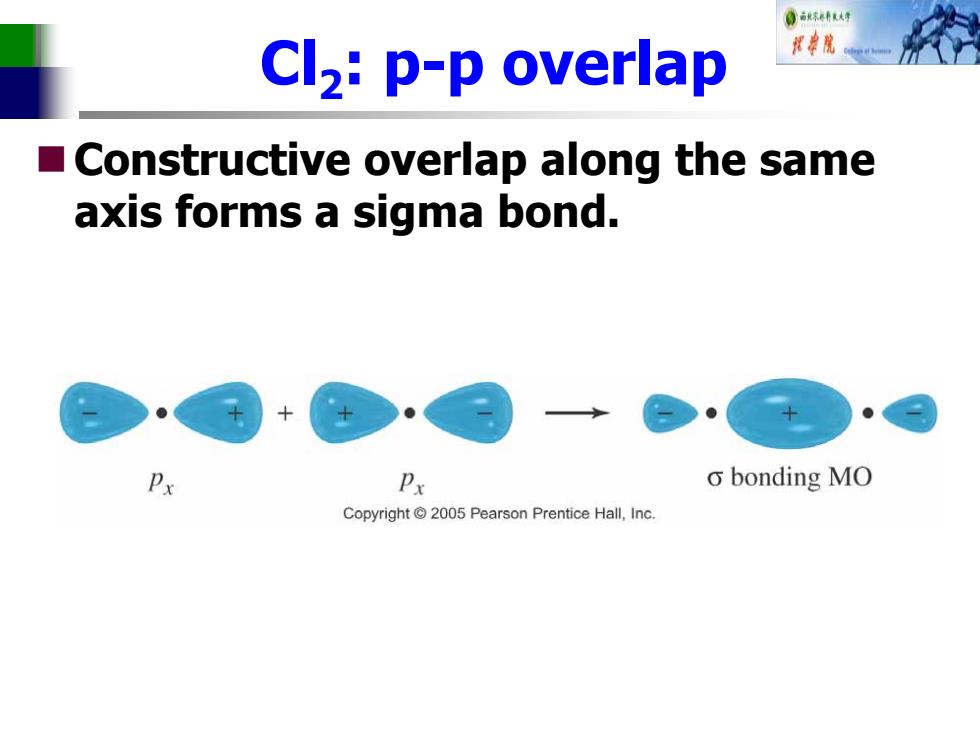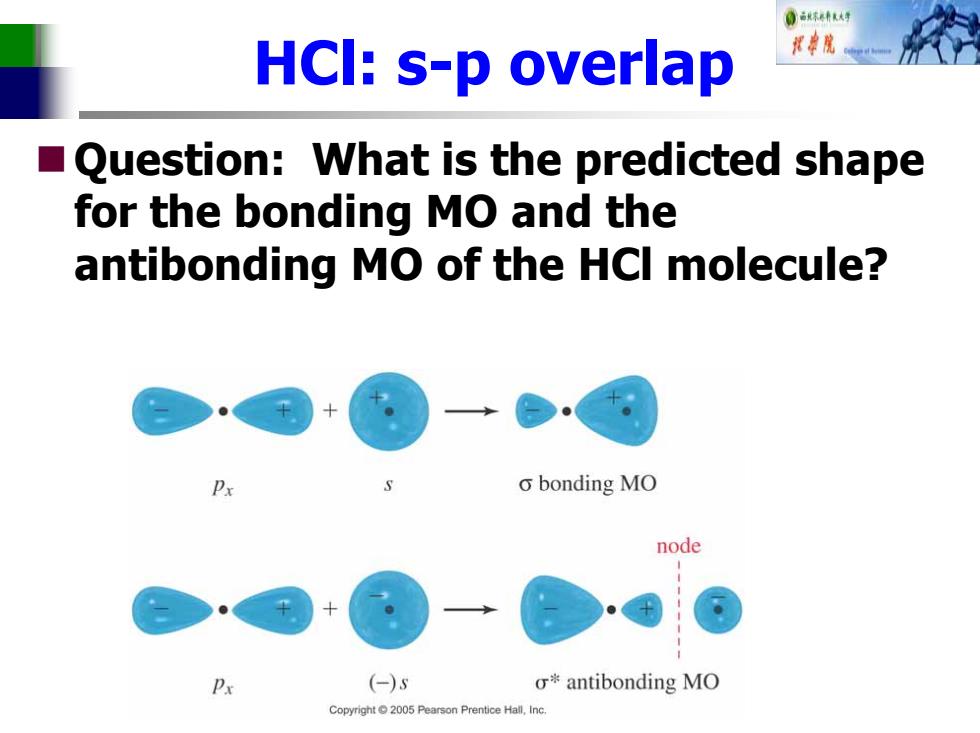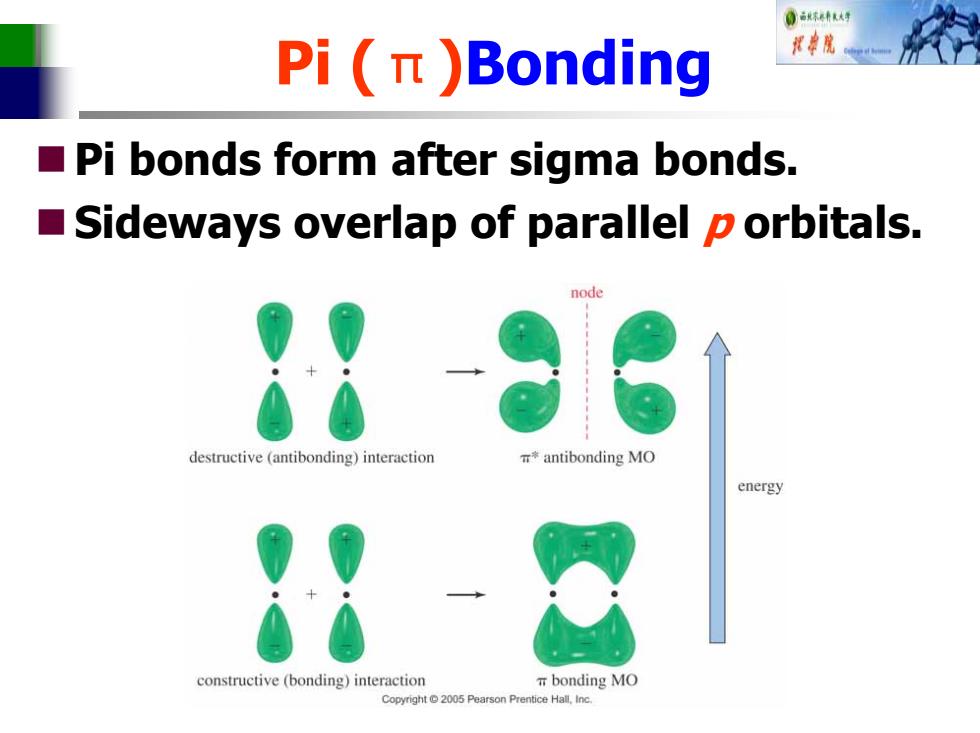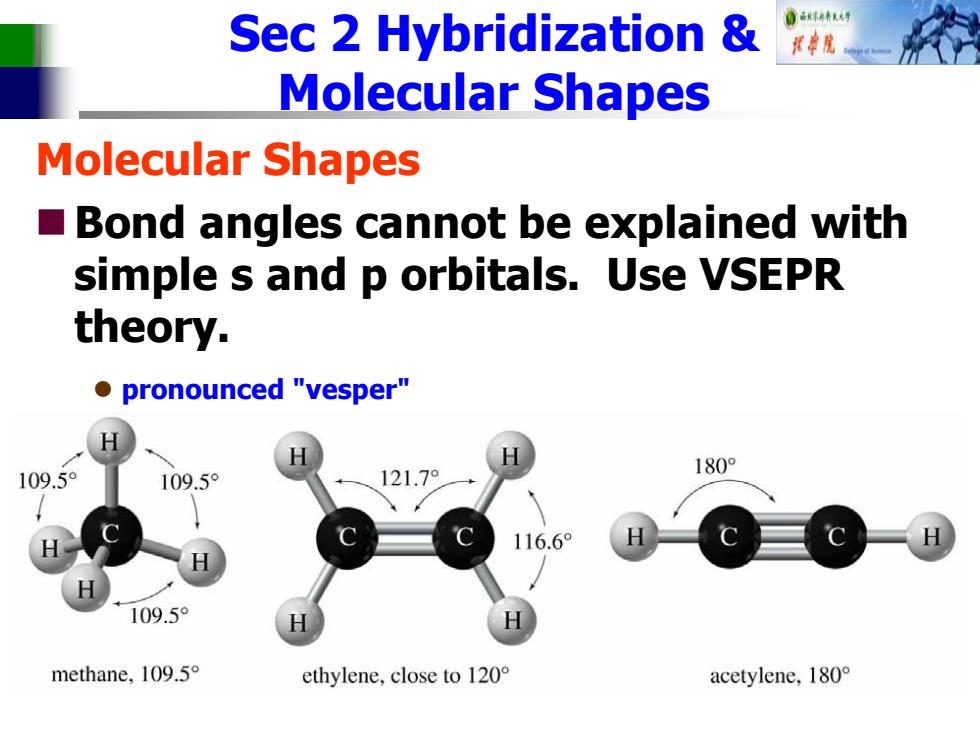
0献手 Cl2:p-p overlap Constructive overlap along the same axis forms a sigma bond. Px o bonding MO Copyright 2005 Pearson Prentice Hall,Inc
Cl2: p-p overlap Constructive overlap along the same axis forms a sigma bond

0球有 HCI:s-p overlap ■ Question:What is the predicted shape for the bonding MO and the antibonding MO of the HCl molecule? o bonding MO node (-)s σ*antibonding MO Copyright 2005 Pearson Prentice Hall.Inc
HCl: s-p overlap Question: What is the predicted shape for the bonding MO and the antibonding MO of the HCl molecule?

0献4号 Pi(π)Bonding Pi bonds form after sigma bonds. Sideways overlap of parallel p orbitals. node destructive (antibonding)interaction *antibonding MO energy constructive(bonding)interaction T bonding MO Copyright2005 Pearson Prentice Hall,Inc
Pi (π)Bonding Pi bonds form after sigma bonds. Sideways overlap of parallel p orbitals

0人 Multiple Bonds A double bond (2 pairs of shared electrons)consists of a sigma bond and a pi bond. A triple bond (3 pairs of shared electrons)consists of a sigma bond and two pi bonds. half of m bond o bond H H half of bond
Multiple Bonds A double bond (2 pairs of shared electrons) consists of a sigma bond and a pi bond. A triple bond (3 pairs of shared electrons) consists of a sigma bond and two pi bonds

Sec 2 Hybridization 可北坏6表人写 Molecular Shapes Molecular Shapes Bond angles cannot be explained with simple s and p orbitals.Use VSEPR theory. ●pronounced"vesper'" 109.5° 180° 109.5° 116.6° 109.5° methane,109.5 ethylene,close to 120 acetylene,l80°
Sec 2 Hybridization & Molecular Shapes Molecular Shapes Bond angles cannot be explained with simple s and p orbitals. Use VSEPR theory. z pronounced "vesper" z Valence Shell Electron Pair Repulsion Theory